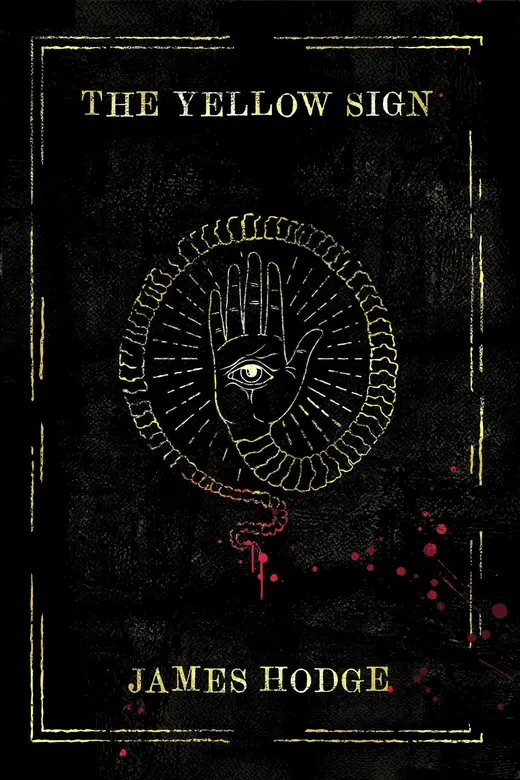
A psychological spiral into desperation, belonging, and the painful road to healing, The Yellow Sign by James Hodge is a tense thriller that builds slow, but hits hard.
An FBI agent still recovering from the trauma of her last mission, Erica Blaine is the fiercely flawed heart of this drama. Despite the haunted past clawing at her heels, she is once again sent into unknown waters to gather intel on a spiritual school, The Yellow College, with growing numbers and some hallmark signs of manipulative behavior. As she slips into the strange patterns of the “school,” with their call-and-response worship, passion for pork, odd bedtime habits, and bizarre obsession with a particular theatrical work, she realizes that she is once again in the midst of a dangerous cult.
As is often the case, it’s much easier to enter a cult than to leave one, but Blaine is desperate to discover the truth about an old friend, Dr. Feinstein, before she flees another deadly collective. Blaine must tread the thin line of subtle investigation without becoming the next name whispered on the shores of Carcosa, dodging romantic advances, codependent friendships, ever-present suspicions, and the mind games of the undead “doctor” running this occult retreat.
This malevolent read features a savage opening that sets an unpredictable and bloody stage for the rest of the novel, leaving readers wondering where the line between reality and fantasy will be drawn. That line stays murky, supported by the undeniably creepy mood on the campus, which gives the prose a constant tension, as though something horrific is always waiting around a corner. Blaine is triggered back into her trauma when her memories start betraying her, and when visions of horror and blood flood into her dreams, she realizes that the hunt for her missing friend and the truth of The King in Yellow may cost her everything – mind, body, and soul.
The narration throughout the novel is deeply personal – nearly a stream of consciousness from the inside of Blaine’s fast-moving and traumatized mind. While this immerses readers in the story as it spills out from this protagonist, it doesn’t always leave much to the imagination. The frequent glimpses of internal monologue and self-referential questions can feel like the author is cutting the corners on storytelling. The dialogue can also be a bit on the nose and purposeful, rather than believable; in an early scene, Blaine spills out a screed of dense exposition after four weeks of stone-cold silence with her assigned therapist. This tendency of shaping the prose solely for the reader’s benefit can feel stilted or even patronizing, which can also take away some of the mystery.
On a technical note, there are few obvious editing errors, but there are some tense irregularities and overly convenient plot developments that may cock a reader’s eyebrow. That said, the sudden mood swings among the cult members, particularly Amber, are cleverly crafted and revelatory, and the slow creep of overall weirdness is well-paced throughout. As a whole, this thriller is deceptively simple, shockingly dark, and hard to put down, given its originality and consistent sense of foreboding.
Book Links
STAR RATING
Design
Content
Editing
Get an Editorial Review | Get Amazon Sales & Reviews | Get Edited | Get Beta Readers | Enter the SPR Book Awards | Other Marketing Services























Leave A Comment